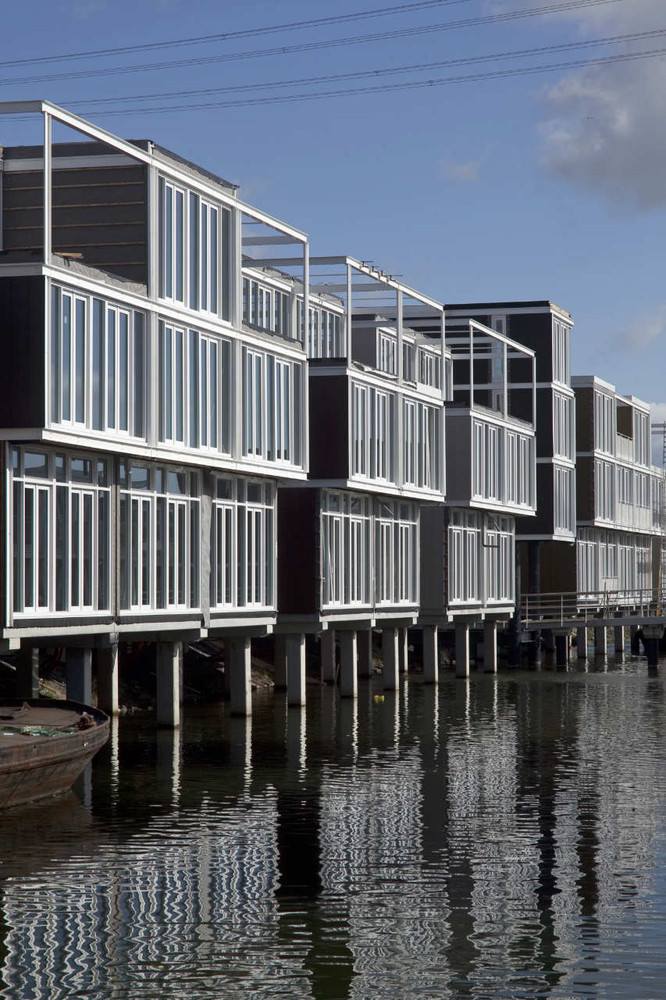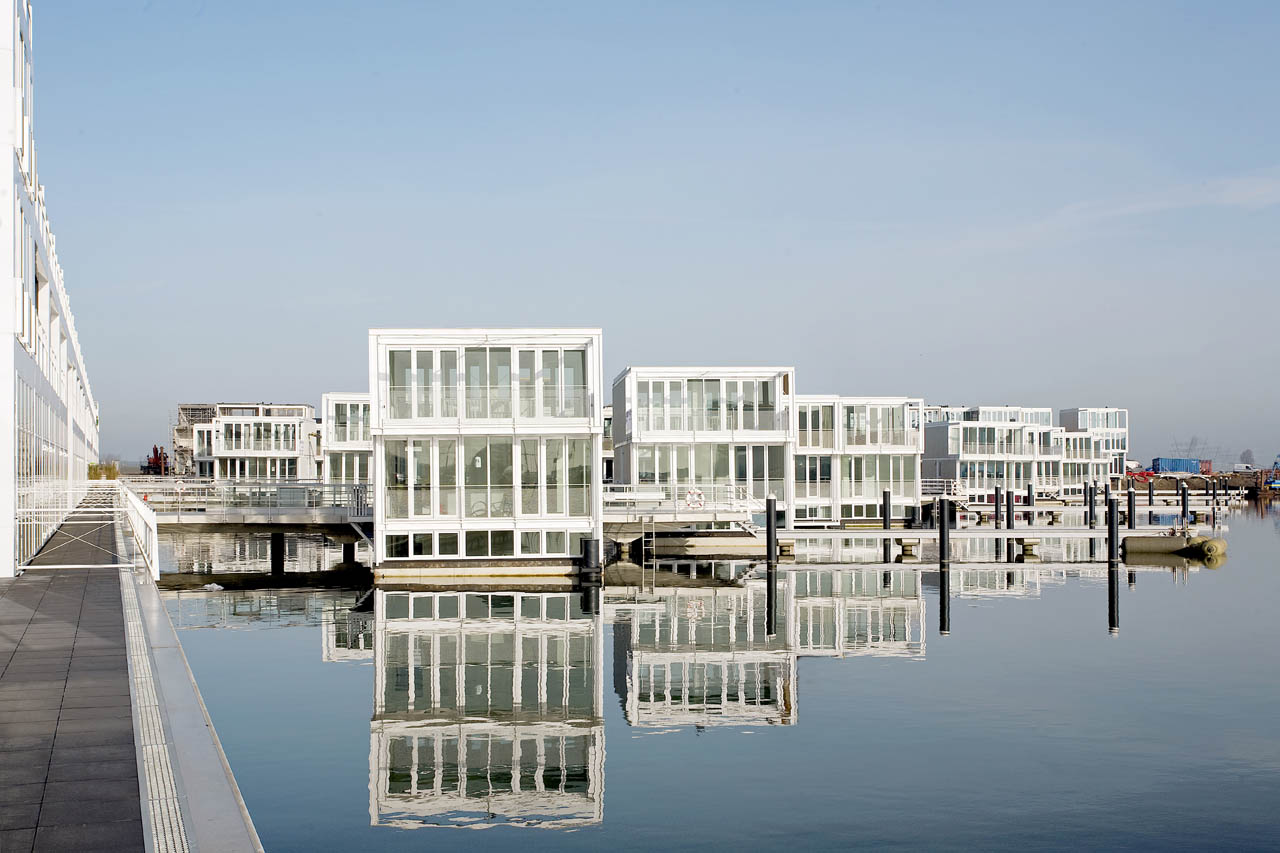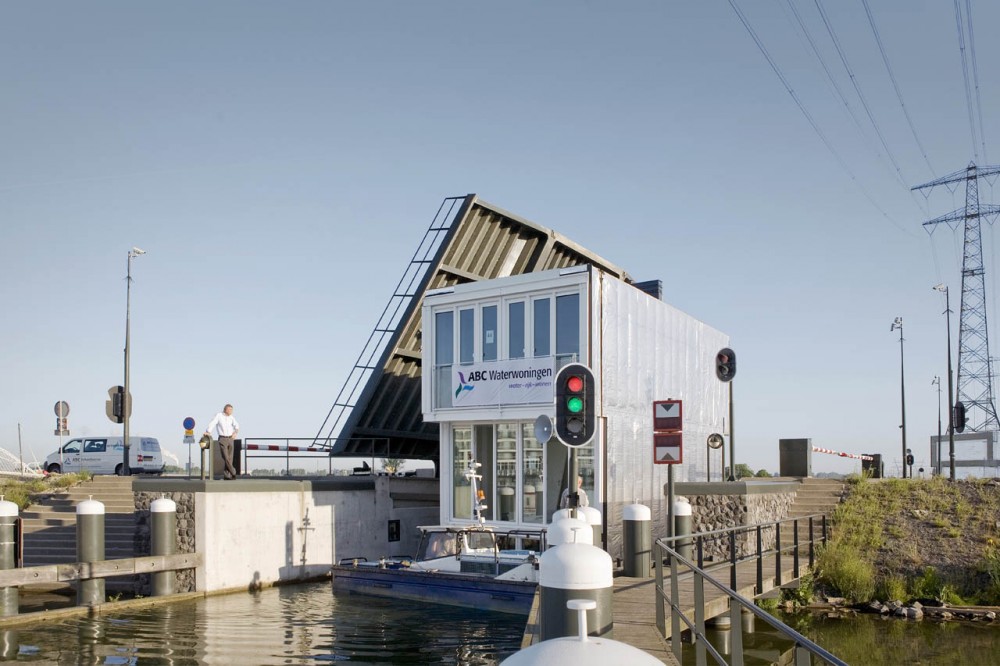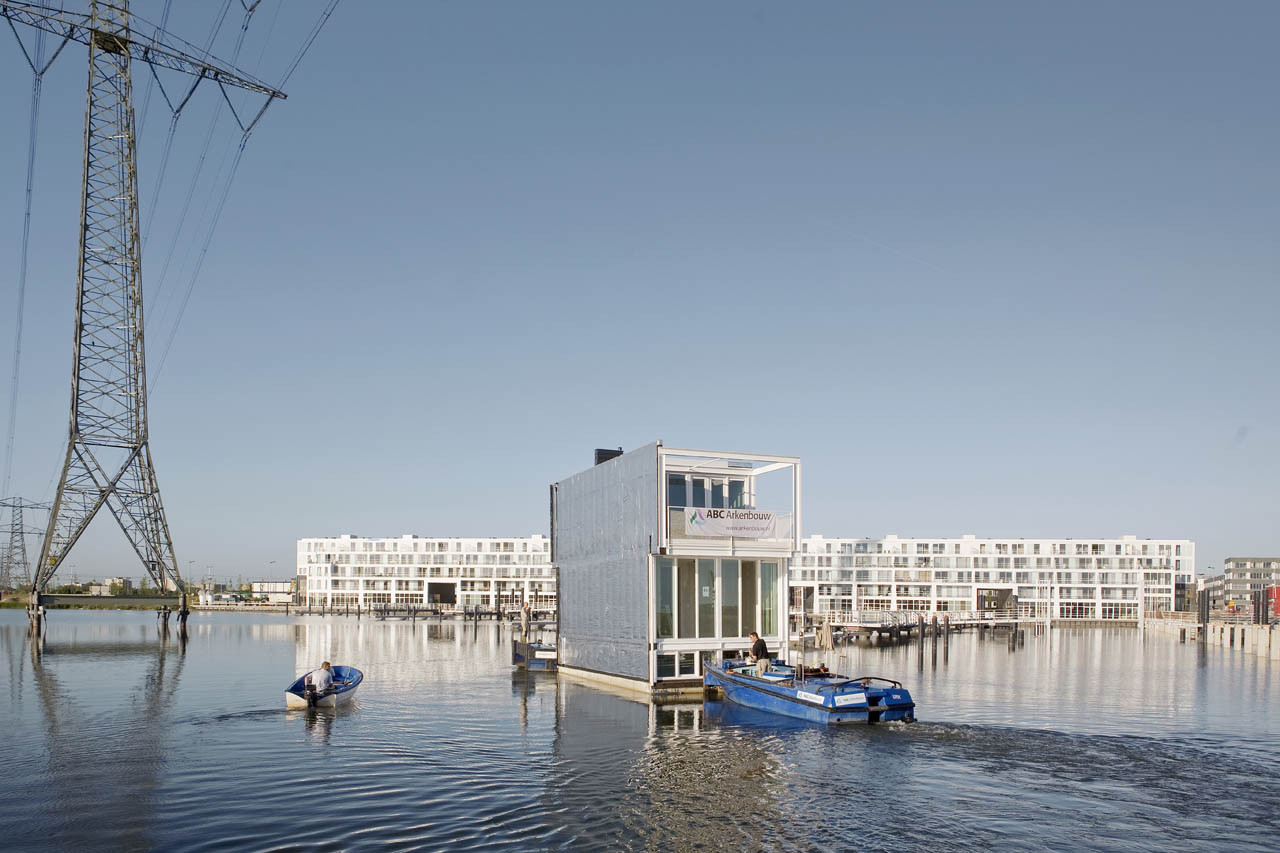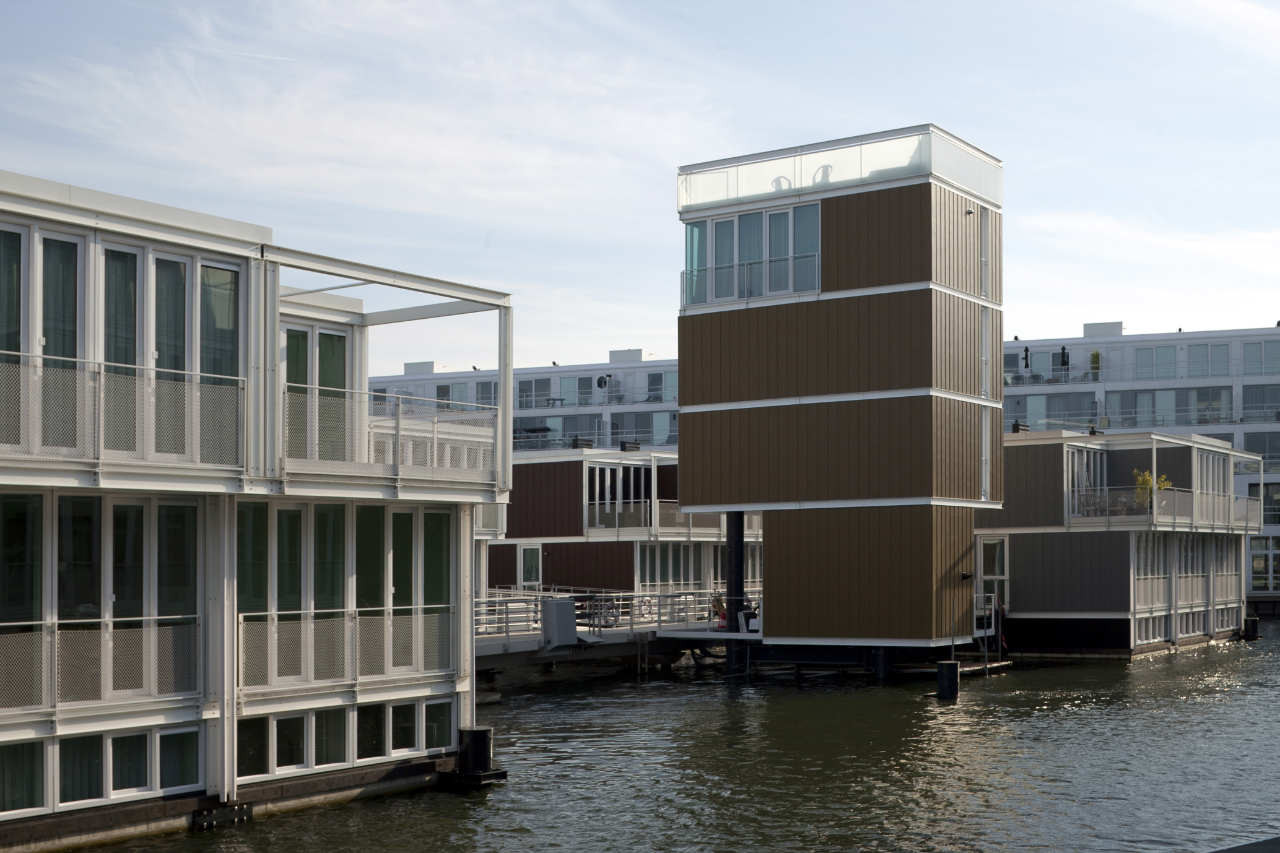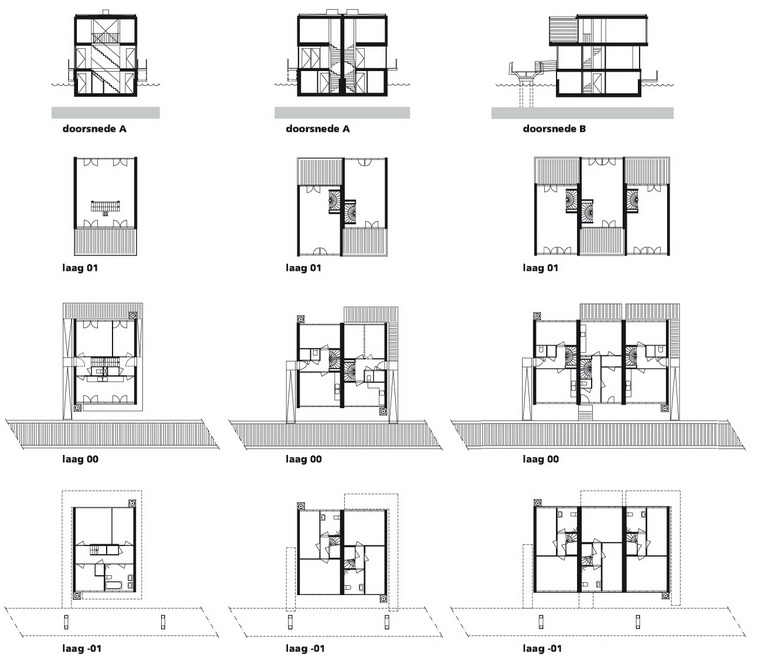L 95 |
Marlies Rohmer – Floating Houses |
type |
|
place |
|
date |
|
architect |
“While the world was created by God, the Netherlands was created by the Dutch people.” This saying is often heard apropos of the residential area on the man-made islands on Lake Ij, in the eastern part of Amsterdam. In Dutch culture, the mainland is not a given, but the fruit of toilsome centuries- long labour that continues today. In Zeeburg, which is part of the city, the former eastern harbour was revived as a result of waterfront rehabilitation projects which are in progress nowadays all over the world. The islands were built at the mouth of the River Ij as a genuine blue-field project (water housing). Upon its completion, the new city quarter, built in several stages by a variety of architects’ teams, will be populated by 45,000 dwellers. This is why not only homes, but also shops, office blocks, schools and recreational facilities are at their disposal here. Actually, the northern side of the first member of this cluster of islands is not mainland, but a bay. Its water level is regulated by dikes in the embrace of a headland. By the time the area becomes fully inhabited, a total of 175 floating dwelling units will adhere to the piers that wind out from the shore to fill out the expanse of water. Three variants of dwellings are on offer – “free-floating” residential buildings, and blocks featuring two or three dwelling units. In addition, there are also some high towers raised on piles to function as fixed points of reference within the pier system. From the mainland, the site is exclusively accessible on foot or by water. The foundation of each floating house is an R-C tub, allowing them to float only through the force of buoyancy. The more a house weighs, the deeper it sinks. Bedrooms are contained underwater. As a response to this unique situation, the garden is transformed. The upper floors feature terraces, while the resting decks floating on the water are accessible via walkways.



